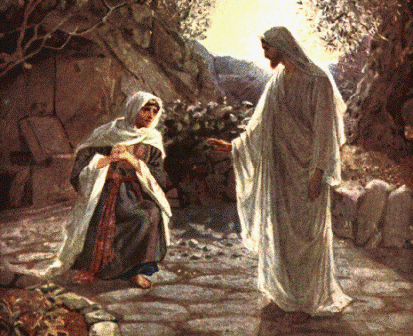 The following points are taken from my first sermon, given to a group of young adults in 1985 at B4 Church in Beaverton, Oregon. I recently pulled these typed (what we did before computers) notes out of the filing cabinet tomb where they had been buried for many years.
The following points are taken from my first sermon, given to a group of young adults in 1985 at B4 Church in Beaverton, Oregon. I recently pulled these typed (what we did before computers) notes out of the filing cabinet tomb where they had been buried for many years.
This message may, in fact, serve as an appropriate if brief summary of our journey through the Gospel of Mark. If you have missed out on some of these posts (there were 94), feel free to click on the "Blog Archive" at the bottom of the right side of this page. They are devotional in tone and short in length, but cover the whole text of Mark.
Who Does What In the Work of the Kingdom?
A Brief Job Description
In this passage (Mark 16), we see God doing three things, and we, in response, as followers of Christ, have a role to play.
God Works on us—He rolls away the stone (v.4) He removes the barrier between man and God. He is the One who saves! The Greek word for salvation (sozo) is far more holistic than we often realize… immediate and eternal spiritual salvation from sin and death, but also physical and emotional healing as well as temporal deliverance from danger.
We are called to Believe (v.14, 16), with a childlike expectation, trusting God to do the miraculous. Through the Gospel of Mark, we have seen Jesus loving people and demonstrating the power of God over sickness, storms, death, and the power of sin. He died and rose again to set us free from our fear of death (Heb. 2:14-15).
Remember Mark 9:22-24? There, the father brought his demonized son to Jesus and said, “If you can…” to which Jesus responded, “All things are possible to those who believe.” The man honestly responded, “I believe…help my unbelief!” This is my prayer.
God Works With Us (Greek word is sunergēo) (v.20) What a comfort! We don’t have to do anything alone. He is a help-mate, a co-worker, and a partner in the proclamation of the Gospel. His presence keeps us from fear and trembling.
We are called to go into all the world & proclaim the gospel to the whole creation (v.15), not just the clean, attractive, or receptive. We have to be willing to be dirty. Here, the women were willing to go to the tomb and be unclean for seven days as a result. If they can do this for the dead, why can’t we do more for the living?
Remember Mark 1:40-45 when Jesus touched and healed the leper, despite the tremendous personal cost the healed man would create. We, too, need to make sure we do not view people from an economic perspective. Jesus works relationally.
God Confirms His Word (v. 17-18, 20), by the attesting miracles that followed. His word will not return void nor fail to accomplish the purpose for which it was given (Isaiah 55:10-11).
We are called to operate in the name and power of Jesus—working with God because he “has the toolbox, the know-how, and the desire” to fix what is broken in the lives of people (v.17-18). My knowledge, ability, and compassion may be limited, but Christ's isn't.
 Remember in Mark 10:46-52 when Jesus healed blind Bartimaeus? We need to stop going along with the crowd and minister compassionately like Jesus did, rather than telling hurting people to be quiet. We need to make sure we are not avoiding the challenges to our faith but rather embracing them in the love of Christ.
Remember in Mark 10:46-52 when Jesus healed blind Bartimaeus? We need to stop going along with the crowd and minister compassionately like Jesus did, rather than telling hurting people to be quiet. We need to make sure we are not avoiding the challenges to our faith but rather embracing them in the love of Christ.
Let our feelings of inadequacy or insignificance drive us to review this chapter, considering what God has done in us, what he is doing with us, and what we can do as a result. If we love Him, we will obey His command to believe.
Thanks for going on this journey with me!
 The following points are taken from my first sermon, given to a group of young adults in 1985 at B4 Church in Beaverton, Oregon. I recently pulled these typed (what we did before computers) notes out of the filing cabinet tomb where they had been buried for many years.
The following points are taken from my first sermon, given to a group of young adults in 1985 at B4 Church in Beaverton, Oregon. I recently pulled these typed (what we did before computers) notes out of the filing cabinet tomb where they had been buried for many years.  Remember in Mark 10:46-52 when Jesus healed blind Bartimaeus? We need to stop going along with the crowd and minister compassionately like Jesus did, rather than telling hurting people to be quiet. We need to make sure we are not avoiding the challenges to our faith but rather embracing them in the love of Christ.
Remember in Mark 10:46-52 when Jesus healed blind Bartimaeus? We need to stop going along with the crowd and minister compassionately like Jesus did, rather than telling hurting people to be quiet. We need to make sure we are not avoiding the challenges to our faith but rather embracing them in the love of Christ.







